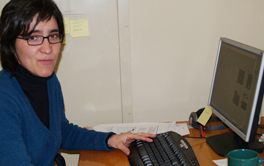INESC Porto with innovative results in the area of High Resolution Imaging
Researchers from the Optoelectronics and Electronic Systems Unit (UOSE) are involved in the HIRESOMI European network – HIgh RESolution Optical Measurement and Imaging, and have managed to demonstrate the application of the OCT technology for spatial high resolution imaging.
30th May 2008
The consortium, from which the Faculty of Science from the University of Porto (FCUP) is an integrant part, has the following partners: University of Kent from the United Kingdom, National University of Ireland in Galway, Imagine Eyes from France and Multiwave from Portugal.
The activity focuses on the development of systems and methods for non-invasive spatial high resolution Measurement and Imaging. The network operated with a European dimension, providing grants for Doctoral programmes and annual traineeships included in the Marie Curie – Early Stage Training programme. It is in this context that César Maule and Michael Leitner, two Ph.D. students, are currently carrying out their activities at INESC Porto.
UOSE is the first research unit with scientific activity in OCT (Optical Coherence Tomography) imaging in Portugal.
The preliminary results obtained by the team led by researcher Carla Carmelo Rosa enable a demonstration of the potential of optical coherence tomography, with possible application in transverse areas such as Medicine, Biology and Material characterisation.
The project will proceed with the development of OCT Differential which will enable the determination of the concentration and penetration of specific composts in a volume, typically a sample or biological tissue.
The spatial resolution corresponds to a cube (voxel) of about 15 microns on a side. Since the images are obtained in real time, the technique also enables the characterisation of the time evolution of these measurements.
The potential applications with larger impact are the differentiated identification of the malignant cells in biological tissues. This work constitutes Michael Leitner’s doctoral programme.
BIP, May 2008


